Secrets of planting and caring for parsley outdoors
A vegetable garden without herbs is like a pond without fish. Summer residents who are keen on breeding them often wonder how to plant parsley so that it sprouts quickly. There is a place for her on any site, and competent care, which even beginners can cope with, will allow you to feast on her fragrant and vitamin-rich greens until late autumn.
Varieties of parsley and their features
Breeding parsley has its own secrets. First, you need to decide on what it is grown for and choose the right variety.
There are only 2 varieties of parsley:
- sheet;
- root.
The first is also widely known under the names of ordinary and curly-haired. They cultivate it for the sake of greenery, the thin and highly branched underground parts of the plant are inedible. Root parsley will appeal to lovers of sauces and pickles. The most valuable part is in the soil. It is a fleshy and thick, yellow-white root vegetable, shaped like a cone or spindle. The high content of vitamins, trace elements, sugars and aromatic substances makes it very useful.
Root parsley leaves are rougher and less aromatic. They can be used as a condiment for various dishes. But the greens are cut off only when the root crop is fully ripe. If you hurry, the plant will not have enough strength for its formation and it will not bring a rich harvest.
Cold-resistant and unpretentious parsley is a two-year culture. In the first year of life, it forms a rosette of green leaves and intensively builds up the underground part, in the second, it blooms and brings seeds. They practice 2 ways to plant it:
- seeds;
- rhizome obtained from last year's plant.
To get roots and leaves, crop seeds are sown in spring. Rhizome planting of parsley is used for forcing fresh herbs. Fragrant leaves are cut off from it already in April, and the flowering of the plant will begin in summer.
Advice
You can not dig out the rhizome in the fall, but let it overwinter in the garden. The result will be the same.
Site preparation
Parsley grows well in fertile, loose soil. A neutral or slightly acidic soil is suitable for her. In the garden, it is better to allocate for the culture an open to the sun or a semi-shaded place that is well protected from drafts.
Growing parsley outdoors will be successful after the following plants:
- cabbage crops;
- Luke;
- cucumbers;
- tomatoes;
- zucchini;
- pumpkins;
- potatoes.
If on the site last season there were beds with her relatives by family: carrots, coriander, dill, celery, caraway seeds, then it will be possible to start sowing parsley seeds only after 3-4 years. Experienced summer residents make mixed beds with it, planting the crop between the bushes of radishes, peas, peppers, tomatoes and cucumbers.
The parsley area is prepared in advance. The dependence here is direct: how much labor is invested at this stage and how much effort is spent on caring for the plantings, the plant will bring as much harvest. During autumn work in the garden, the soil is dug deeply, enriching it with compost. In the spring, it will be enough to loosen the soil and fertilize it with mineral compounds that contain a lot of potassium and phosphorus. The plant responds well to the introduction of urea and ammonium nitrate.
Little tricks
Most often, parsley is planted with seeds. The main difficulty in breeding it is that it emerges rather slowly. To speed up this process, professionals recommend germinating the seeds before sowing.
There is one more, more laborious way. It is only suitable for leafy parsley varieties and consists of growing them through seedlings.You will have to spend more time caring for it, but fresh herbs will appear on the table earlier, and it will be possible to cut it up to 6 times over the summer. Sowing of hatched seeds is carried out in peat tablets or in separate cups at the end of February or in March, depending on the local climate. You can plant them in the beds at the age of 30-40 days. This is usually done in April.
In open ground, seeds begin to sow in early spring. If leafy varieties are selected for breeding, you can do this later - in June and July. With this planting, they will bring one harvest and gain strength to survive the winter. Root parsley is more demanding when it comes to sowing. The latest is held in mid-May. If you plant seeds in the second half of the month or in June, the root crop of the plant will not have time to ripen.
Parsley reproduces well by self-seeding. Its ripe seeds fall to the ground in autumn. So that they do not freeze, they need to be embedded in the soil. The procedure is carried out from mid-October until the beginning of frost. When the snow falls, it is raked into the area with the future bed, creating additional protection for the seeds from the cold. If you provide them with such care, parsley rises very early. Its sprouts will emerge from the ground when the air warms up to 4˚C. They can be covered with a film, but it is easier to leave them to develop in the open field, because parsley can easily withstand even significant frosts (down to -9˚C).
Sowing in the beds
When sowing untreated seeds, the culture emerges only after 2-3 weeks. It is better to take planting material not fresh, but at least one year old - it contains more growth energy. But if you prepare the seeds correctly, parsley will appear from the soil faster. It is not difficult to do this, but how much time such care will save!
Presowing seed treatment takes place in 2 stages.
- First, they are soaked for 2-3 days in warm (18-22˚C) water, renewing it after 3-4 hours.
- Then the seeds are placed in a solution of a growth stimulant or fertilizer containing trace elements, where they are kept for 18 hours. It is optimal if oxygen is supplied to the container with the nutrient liquid. This will allow the seeds to hatch even faster.
The sprouted parsley sown on the beds will sprout in 7 days. It is simple to calculate how much planting material is needed: 1 g of seeds is spent on 1 m² of soil surface. When sowing in June (and until early August), this amount is increased by ⅓. Before planting parsley, the beds are well spilled.
The seeding pattern depends on the variety. If the parsley is leafy, 10-12 cm should remain between the neighboring bushes. Its curly varieties can be planted a little more often - at a distance of 8-10 cm. Having marked the groove, they make nests, observing the recommended spacing. 3-4 seeds are dipped into each. When shoots appear, they are thinned out. Root parsley is sown even denser, leaving 1-4 cm between neighboring plants. Seeds are laid out in a row one by one.
Advice
When planted in spring and summer, the parsley should be under a 6-10 mm soil layer. In the autumn period, the embedding depth is doubled.
Having finished planting the seeds, they are sprinkled with soil, slightly compacting it. Then the beds are watered and mulched. This will facilitate further planting care. You can cover them with foil.
Care rules
Until the young parsley emerges from the soil, caring for it includes careful watering and timely weed removal. If a film cover is used, the greenhouse is regularly ventilated. With the emergence of seedlings, loosening of the soil and top dressing are added to these activities.
Plantings are thinned out when 2-3 true leaves are formed on the shoots.
While a leaf rosette is forming on the plants, care is taken twice in the form of dressings. Parsley likes organic fertilizers - infused mullein or compost. A nutrient solution is prepared at the rate of 1 kg of substance per 8-10 liters of water. It is good to add superphosphate and potassium sulfate (15 g each) to it. In August, parsley ceases to need nitrogen.It is especially important to exclude this element when growing its root varieties in order to avoid its accumulation in fruits. Twice a season it is worth feeding the plantings with microelements. It is better to do it in a foliar way.
The heat is not terrible for parsley. But you need to water it more often on hot days. With a lack of moisture, the leaves of the plant become tough, although more fragrant. If parsley is grown for the sake of fresh herbs, care in the form of watering should increase the soil moisture to 60-70%.
Advice
The leaves of the plant can be dried. To make them more fragrant, watering is greatly reduced 1.5-2 weeks before cutting.
Plants give greens until frost, so they are left in the garden until late autumn. You should not rush to dig up the roots, they start harvesting them at the same time. If parsley hibernates on the site, caring for it includes careful hilling and mulching. You can use straw or pine needles for it. In order for the plants to better endure the cold, all the leaves are cut from them in September. With the arrival of spring, when the snow melts, the mulch is removed, and the beds are covered with foil.
Root crops are stored in the basement. To get an early harvest of parsley, they are planted in the ground in the spring. But first they need to be processed: shorten to 12-15 cm, cleaned of old foliage, soak in a growth stimulator. After that, they are placed on the beds, leaving 8-10 cm between them, and then grown under a film shelter.
The cultivation of parsley in the gardens has already become a tradition for many. From the beginning of spring to the end of autumn, she brings fresh herbs to gardeners, which will favorably set off the taste of any vegetable or meat dish. Salads, soups, stews, sauces, marinades - everywhere it will be appropriate. Its leaves are good fresh, but you can make fragrant preparations for the winter from them by freezing or drying.
There is a place for parsley in any, even a very small area. It is difficult to find another equally unpretentious and equally useful plant. The only difficulty that can be encountered when breeding it is that you will have to be patient while waiting for the shoots to appear. But it is also quite solvable. One has only to properly process the seeds before sowing, and spicy herbs will appear on the table in mid-spring.
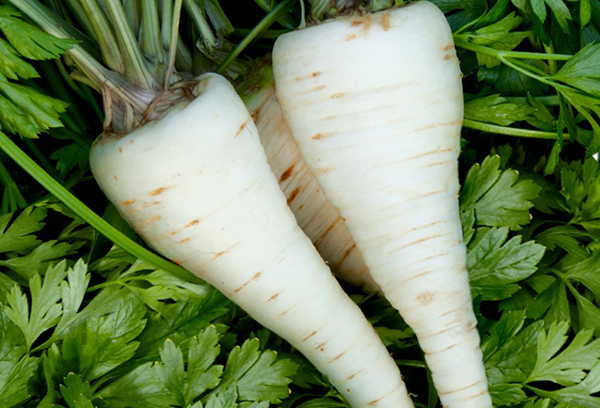
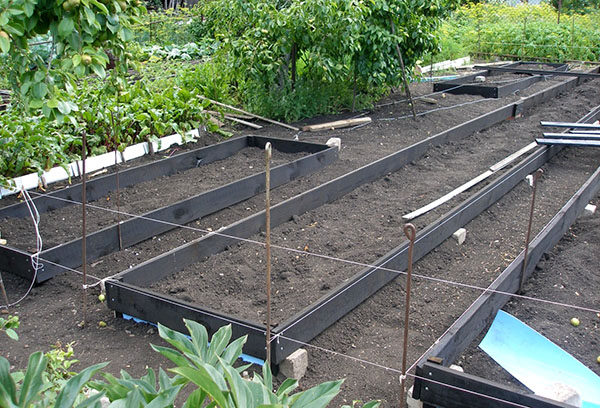
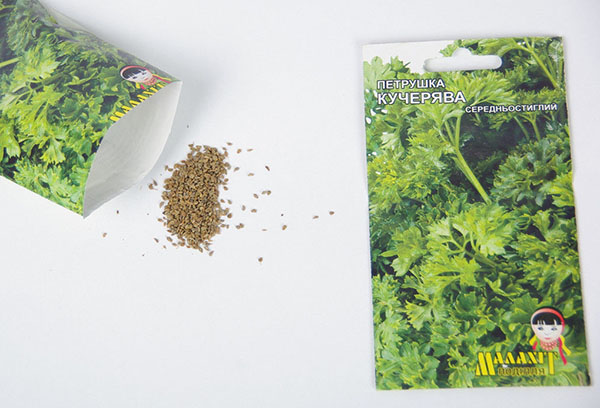
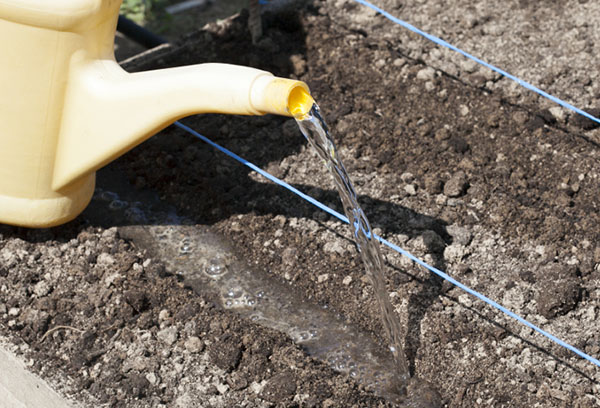
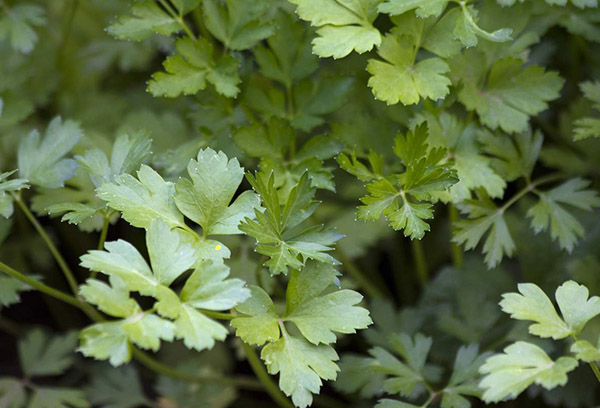
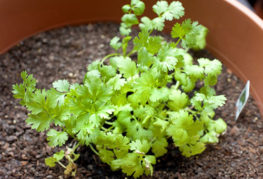
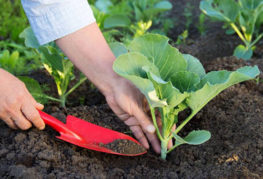
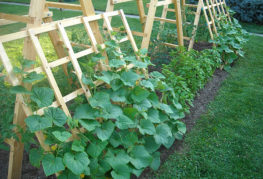

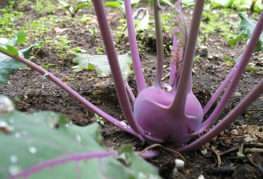
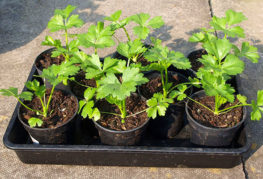
and will be published shortly.